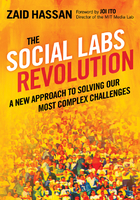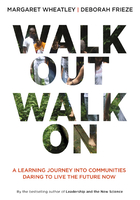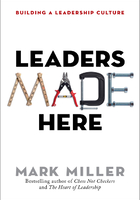How Do I Prepare?
When it comes to group decision-making, so much of what determines success occurs before anyone steps into the meeting room. The eight building blocks described in this chapter make up the foundation for a successful consensus process. They are:
Determine whether consensus is a good fit
Decide who to involve in the decision
Enlist a skilled facilitator
Clarify the group's scope and authority
Educate group members
Develop an agenda
Gather the relevant information
Start the meeting off right
Determine Whether Consensus Is a Good Fit
Consensus is a vehicle for getting to a particular destination. In this case, that destination is a high-quality decision to which key stakeholders are committed. Selecting the right vehicle to get you to your destination has a lot to do with the terrain. In the case of decision-making, the terrain is mostly characterized by shared beliefs of the group and willingness of formal power holders.
How do you determine whether consensus is the right method for your decision process? First, go back to the two lists for determining when consensus does and does not make sense in the section “Choosing the Right Decision-Making Approach” on page 6. Second, assess the group's readiness by asking the following questions:
Do decision participants feel a true stake in the decision?
Do decision participants share a common purpose and values?
Do decision participants trust each other, or do they have a desire to create that trust?
Is every participant willing to put the best interests of the group over his or her personal preferences and self-interests?
Is it possible to create a meeting environment in which people will share their ideas and opinions freely?
Are formal leaders prepared to yield to the group's decision on this matter?
Are people willing to spend the necessary time to let the best decision come about?
Can the information necessary to make the decision be shared with every member of the group?
Are decision participants capable of listening well and considering different points of view?
Do participants possess basic logic and group communication skills, or are they at least open to assistance from a skilled facilitator?
Another important consideration in a group's or organization's readiness for consensus is the willingness of formal and informal leaders to have a “vote” that is no more important than any other stakeholder's vote. When I am speaking with leaders who might be considering using consensus on their team for the first time, I often describe the stakes in this way:
Your choice to use consensus means that you will be influencing the conversation based on the merits of your ideas and not based on your position. This means you have to be willing to check your title at the door, along with every other member of the team. Think carefully before you decide to use consensus because there is no faster way to create cynicism than to reverse or veto a consensus decision. You also have a lot to gain by using this method, including a high level of motivation, buy-in, and fast implementation.”
As suggested by some of the questions listed previously, an important consideration is the skill level of the group. Consensus involves a variety of critical skills, the most important of which is listening. While anyone can learn consensus building skills, it is important to understand how steep the learning curve is likely to be for any particular group. I have observed that participants often experience consensus as a process of remembering old skills rather than learning new ones. Bad habits die quickly when good ones are rewarded by a satisfying and effective decision-making process.
Decide Who to Involve in the Decision
How do you decide who to involve in a decision? On what basis does a leader make these choices? Here are some useful questions that will help you determine the appropriate group members:
Who will be most affected by the decision?
Who will be charged with implementing the decision?
Whose support is essential to implement the decision?
What important stakeholders or group perspectives should be represented?
Who has useful information, experience, or expertise related to this issue?
Who must be involved to make the decisions resulting from this process credible?
As you identify the people who should be involved in the decision, you will want to consider different kinds of roles. Here are some common ways to distinguish the roles people might play in the decision-making process.
Group Leader. In a hierarchical organization or group, the leader is usually the convener of the decision-making process and the person who has empowered the group to make a consensus-based decision.
Decision Steward. When no one individual is ultimately responsible for the decision, it is useful to have a designated person whose role it is to shepherd the process along. A decision steward may or may not be part of the decision-making group. This person is the official sponsor and coordinator of the process within a community or organization.
Decision Makers. These group members have been authorized to approve the proposal or recommendation that comes out of the group. Without every decision maker's consent, there is no decision.
Advisors. These people bring important information or experience to the group but might not have a strong stake in the decision and do not have a “vote”. Advising members can include outside consultants or experts.
Observers. Observers witness the process but do not contribute to the discussion or decision. Typically, observers are expected to remain silent during the meeting(s).
Alternates. For decision processes that may last for several months, it is useful to have alternates who attend all meetings as observers. If the person who the alternate represents is absent, that person takes on decision-maker authority.
Enlist a Skilled Facilitator
The facilitator is an objective, neutral party who is there to help you navigate through the consensus process. An effective facilitator helps your group make decisions that truly reflect the shared will of its members. He or she understands what must occur for consensus to be reached and helps the group increase its ability to make consensus-based decisions. A facilitator should not have a personal stake in the decision or at least should be willing to refrain from expressing personal views to group members.
In consensus, good facilitation can mean the difference between people leaving the meeting energized and committed to the future or feeling tired, frustrated, and defeated.
The consensus facilitator plays an active role before the meeting, helping your group design the overall consensus process. In hierarchical organizations like most companies, an effective facilitator works closely with the group leader to articulate meeting objectives, design agendas, and clarify decision parameters. During the meeting, the facilitator identifies common themes, helps participants synthesize ideas, and creates opportunities for concerns and differences to be expressed.
Some of the functions an experienced facilitator performs include:
working with the leader and group members to clarify meeting goals and agenda topics
educating people about how to make consensus decisions
helping the group establish a shared purpose and ground rules with the group
fostering a tone of openness that allows for constructive disagreement
suggesting techniques and tools for decision-making and problem solving
keeping discussion focused, upbeat, and safe for all participants
summarizing key discussion points, proposals, and agreements
encouraging full, balanced participation from all members
intervening directly or through the group leader to address any disruptive behavior
helping the group evaluate its effectiveness and learn from its experience
FACILITATOR SELECTION CHECKLIST
In-depth knowledge of consensus practices
Flexibility in adapting to your group's or organization's unique needs
Respect for the time and effort you invest in meetings
Ability to listen closely and recognize relationships among ideas
Capacity to remain neutral and objective about meeting topics
Patience and an outwardly optimistic outlook
Focus on what the group needs rather than being liked by its members
Experience using approaches that encourage full participation and collaboration
Assertiveness and diplomacy in dealing with strong personalities
The division of responsibilities between the facilitator and the leader very much depend on the structure and culture of the organization or decision-making group. Where there is an established structure and an acknowledged leader, the facilitator must be careful not to co-opt the leader's role. I caution facilitators and leaders to keep an eye on “role drift” by ensuring that formal leaders:
“charter” the decision-making group (see the next section)
select decision group members
define meeting objectives and agenda priorities
open meetings by describing the purpose and objectives
actively model the ground rules and principles of consensus
share and ask for observations and feedback about the process
intervene in concert with the facilitator to end disruptive behavior (see Chapter 5)
Clarify the Group's Scope and Authority
A decision-making group charter defines the group's purpose, authority, values, and operating agreements. Prior to bringing the group together, the group leader or decision steward should take some time to define the charter of the group by answering the following questions:
What issue is this group being brought together to address?
Why is this issue important?
What values must guide any decisions this group makes?
What are group members' responsibilities?
How will we know when the group has completed its task?
Where does this group's decision authority begin and end?
What are the ground rules for group member behavior?
How do we define a consensus decision in this group?
What are our time pressures or constraints?
What happens if we cannot reach agreement by consensus?
DECISION GROUP CHARTER
Spider Corporation's Waste Reduction Task Force
Issue
Our company has set a goal of reducing material we put into the waste stream by 50%. We believe this goal is important because it will enable us to operate more consistently with our company's core value of environmental stewardship. We also believe that reducing waste will reduce operating costs.
Purpose
The purpose of this task force is to develop and recommend to the Executive Committee comprehensive policies and procedures that will result in our waste reduction goal.
Initial Decision Criteria
The task force's recommendation must be guided by the following criteria:
It is consistent with all of our company's core values.
It results in the stated goal of 50% waste reduction within 18 months.
It has a positive or net zero financial impact on company profitability.
It can be implemented in all of the company's facilities around the country.
Group Authority
This group is charged with developing a consensus-based recommendation (supported by all members of the task force). This recommendation will be brought to the company's Executive Committee for final approval.
Task Force Member Responsibilities
Attend all meetings, having completed all relevant reading and assignments.
Advise task force leader if you cannot participate and make arrangements with your alternate.
Solicit input and feedback from people in your constituency, department, or unit.
Decision Method
The task force will decide on a recommendation by consensus. This means that final recommendation must address every group member's concerns. A consensus decision is more likely to be approved and funded by the Executive Committee. If the group cannot reach consensus, it may submit a description of alternatives considered without a recommendation.
Task Force Parameters
All dollar expenditures associated with this team's work must be approved by the CFO.
The Task Force will make recommendations to the Executive Committee by June 15, 2004.
Ground Rules for Member Behavior
To be determined by group at first meeting.
Educate Group Members
In organizations with histories of collaboration and participation, consensus-based decision making is not a big stretch. In organizations where centralized authority (e.g., individual decisions) and competition (e.g., win-lose debate) have been the norm, the learning curve is steeper and more education is required.
With new groups that have very little experience using consensus, I have found that I can lay a solid foundation of principles and practices within ninety minutes. All of the recommended elements for a “consensus briefing” are contained in this book. My strong preference is to co-facilitate this briefing with either the formal leader or the decision steward to demonstrate the organization's commitment to use consensus. Here is a sample agenda for the consensus briefing.
SAMPLE AGENDA FOR CONSENSUS EDUCATION SESSION
What is the issue on which we will be deliberating, and why is it significant?* (15 minutes)
What is consensus, and why have we chosen to use the method for this decision?* (10 minutes)
What are the principles to which we must commit in order to reach true consensus? (15 minutes)
What is to be gained if we are successful at reaching consensus?* (5 minutes)
What will our process look like? (15 minutes)
What are the different roles of people involved in this process? (10 minutes)
What are the ground rules? (15 minutes)
Where can you learn more about consensus? (5 minutes)
* It is particularly important that this topic be presented by the formal leader or decision steward.
Develop an Agenda
Like most meetings, consensus meetings have a purpose—to make a decision or prepare the group to make a decision. More complex decision processes involve a series of meetings with different purposes. Meeting purposes include:
Learn about consensus and agree on a work plan.
Study the issue and arrive at a shared understanding.
Establish criteria that will be used to develop and select an alternative.
Generate creative alternatives to address the issue.
Deliberate and reach a decision.
Develop a plan for implementing the decision.
For multi-meeting decisions, it is useful to create a road map to which group members can refer during the course of the process. A road map depicts each meeting, clarifies the purpose of the meeting, and shows the relationship among the meetings.
SAMPLE MAP OF MULTI-MEETING DECISION PROCESS:
For any individual meeting, the agenda is a flexible blueprint. It establishes a sequence of topics, defines how much time will be devoted to those topics, and specifies what roles group members will play during different parts of the meeting.
To effectively sequence and allocate time to agenda items, you should consider these six questions:
Given the purpose and goals of this decision-making group, how relevant is this issue?
How much time are we likely to need to fully consider and reach a decision on this issue?
Will we have the information we need to make an informed decision about this item?
How controversial is this issue likely to be? How much emotion is tied up in this issue?
Would it be more effective to organize our deliberations on this issue into segments over the course of several meetings?
What is the importance and urgency of this issue relative to the other items on our agenda?
TIPS FOR AN EFFECTIVE AGENDA
Avoid lengthy presentations during meetings. Try to distribute information in advance of meetings so that you can use actual meeting time for discussion and decision making.
Get input from group members who have more experience or knowledge of the issue if you are unsure about the appropriate amount of time for an agenda item.
Know exactly what “completed” means for every agenda item. Consult with group members to clarify the desired outcome of each agenda item. Participants may describe the following kinds of desired outcomes:
We clarified facts and arrived at a shared understanding of . . .
We generated ideas for possible solutions to . . .
We developed a plan of action for . . .
We made a decision about . . .
Remain flexible. During the meeting, the group may ask you to change the sequence of topics, the amount of time devoted to an item, or the kind of outcome associated with an agenda item.
Gather the Relevant Information
Before the meeting, try to identify relevant information that would be useful in the group's discussion of the issue. When- ever possible, this information should be circulated in advance of the meeting, and group members should be asked to identify clarifying questions and additional information they need.
When the group is at an early phase of understanding an issue, a basic “background briefing” is often useful (see the following template and example). Facts and information can often be provided through expert advisors and fact-finding subgroups comprised of members of the larger consensus group.
ISSUE BRIEFING TEMPLATE
Clarify the issue.
Describe the situation.
How long has it been going on?
What is the history?
What are the possible causes?
Determine the current impact.
Who is the issue currently affecting and how?
How is the issue currently affecting the organization?
How is the issue currently affecting others (e.g., customers, staff, etc.)?
Determine future implications.
What is at stake for our organization?
What is at stake for others outside our organization?
If nothing changes, what is likely to happen?
Describe the ideal outcome.
When this issue is resolved, what results do we hope to see?
How will we know that these results have occurred? How will we measure them?
In resolving this issue, what principles and goals should guide us?
Identify any preliminary alternatives.
What are the different approaches that could get us to the resolution described previously?
What are the pros and cons of each of those alternatives?
Which alternatives might best achieve the desired outcomes? Why?
This line of questions is based on the “Mineral Rights” model described in Fierce Conversations by Susan Scott (New York: Penguin, 2002).
Start the Meeting Off Right
What happens during the first twenty minutes of any meeting lays the foundation for success or failure. By addressing seven key questions at the outset of a consensus meeting, you ensure that participants share a common idea of what is to be accomplished and how it is to be accomplished. In addition to establishing those boundaries, it is also your job as group leader to set a tone that captures the spirit and core values of consensus-based decision-making.
Why are we here? At the outset of the meeting, the group leader (or facilitator if there is no formal leader) provides a concise statement of what the purpose and intended outcomes of the meeting are, including the decisions on which the group will attempt to reach consensus.
Today you are here to address (name the issue). Specifically, this particular group has been brought together to make a recommendation/decision regarding (name the issue).”
What are we authorized to decide? Clarify the scope of the group's decision-making authority. In most organizations, these parameters are defined by senior management or laid out more formally in the team's charter.
This group has been charged by (name authorizing person or group) to make a final decision/recommendation regarding (name issue). This group is not authorized to make decisions regarding . . . or decisions that will impact . . .”
Who is in the room? Take some time to make sure all group members, including observers and guests, have a chance to introduce themselves and explain why they are attending.
Let's take a moment to introduce everyone and to understand why each of you is part of this decision. When you introduce yourself, please state briefly what your connection is to this issue.”
What special roles will people be playing? Explain the various roles that people will assume during the decision-making process, including the roles of facilitator, recorder, decision makers, observers, alternates, etc. Explicitly ask group members if they are willing to accept the roles they have been asked to play. This may be a good opportunity to practice a consensus decision!
As the facilitator, my job is to keep the discussion focused and to make sure everyone has a chance to speak. I'll help weave together the different threads of your discussion to find areas of agreement. In addition, I'll try to highlight points of disagreement and concern. My role is to be neutral regarding the content of your discussion, but to be active in helping you manage the decision process, including enforcing the agreements you'll be making in a little while. Do I have your permission to do this?”
Do we understand the consensus process? Since consensus will be new to many groups, it is important to provide a clear definition of consensus as well as a description of the decision-making process.
The decisions you are making here today are by consensus. This is a bit different than other decision-making approaches with which you may have been involved. Consensus decisions can only be reached when every one of you states that you've reached a decision you can support—a decision that addresses your concerns and is consistent with the mission, goals, and requirements of the organization. Any questions?”
Do we understand the agenda? Before starting the meeting, describe the agenda. Explain how the time will be allocated for each topic. If any special group processes will be used (e.g., break-out groups), give group members a preview of what this will look like.
Let me just take a moment to review agenda topics and the time allotted to each topic. Given your purpose and goals for this meeting, does anyone have any reservations or suggestions regarding this agenda?”
Are we willing to commit to the ground rules? Suggest some rules that will guide group member behavior, and ask group members to suggest others they feel would foster a productive and respectful consensus decision process. (See sample ground rules, page 62.)
I'd like to suggest some agreements that you might adopt. These agreements tend to support effective group decision making and, in particular, consensus. These are ‘I' statements because they are commitments each of you makes.
I encourage thorough discussion and dissent.
I look for common ground solutions by asking ‘what if' questions.
I do not agree just to avoid conflict.
I avoid repeating what has already been said.
Are there other agreements anyone wants to add? (wait for response) Are you willing to keep these agreements in our meeting today? (wait for response) Do I have your permission as facilitator to provide gentle reminders when the agreements are not being kept?” (wait for response)
Careful preparation by enlisting the right people, educating them about consensus decision-making, developing an agenda, and gathering helpful information are among the key steps in helping to ensure an effective process. The next chapter introduces the five basic steps of consensus decision-making.














